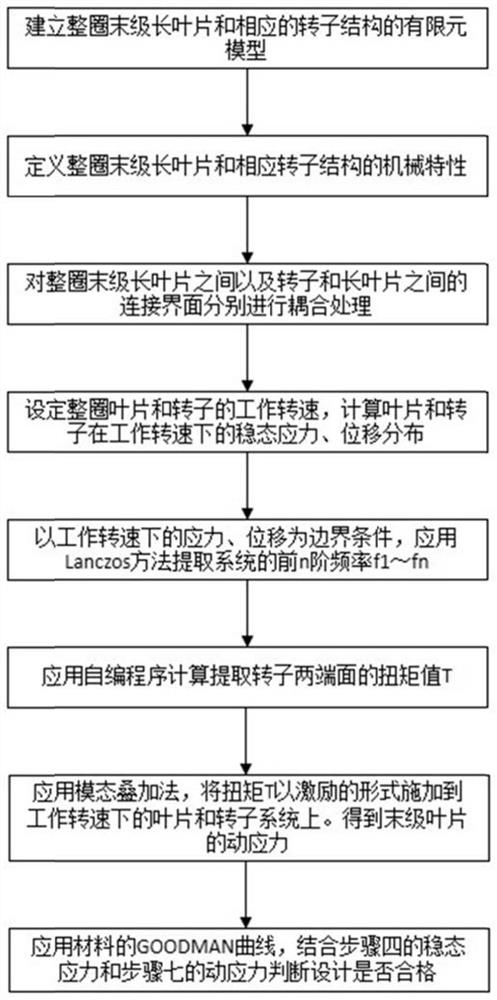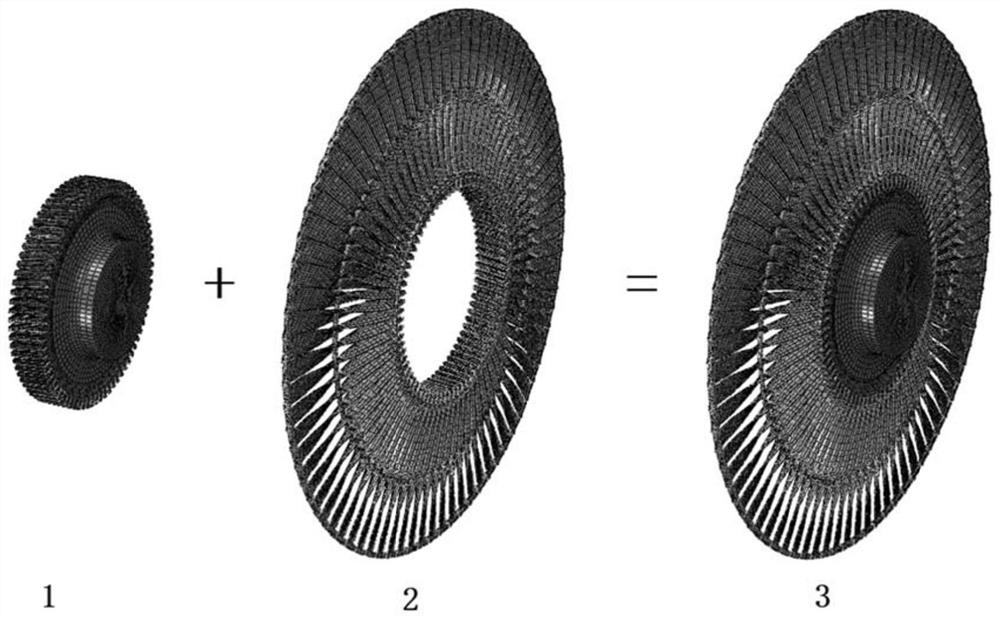Turbine last-stage long blade torsional vibration stress obtaining method based on finite elements
A technology of vibration stress and acquisition method, which is applied in the direction of machines/engines, mechanical equipment, engine components, etc., can solve problems such as the inability to predict the safety of the last stage blades of steam turbines, and achieve the effect of avoiding accidents
- Summary
- Abstract
- Description
- Claims
- Application Information
AI Technical Summary
Problems solved by technology
Method used
Image
Examples
specific Embodiment approach 1
[0031] Specific implementation mode one: refer to figure 1 This embodiment is specifically described. A finite element-based method for obtaining torsional vibration stress of the last-stage long blade of a steam turbine described in this embodiment includes:
[0032] Step 1: Establish the finite element model of the last-stage long blade and the corresponding rotor structure of the whole circle;
[0033] Step 2: Define the mechanical characteristics of the last stage long blade and the corresponding rotor structure in the finite element model;
[0034] Step 3: Perform coupling processing on the defined connection interfaces between the last-stage long blades of the entire circle and between the corresponding rotor and the last-stage long blades of the entire circle;
[0035] Step 4: Set the operating speed for the full circle of last-stage long blades and corresponding rotors after coupling processing, and then calculate the steady-state stress and displacement distribution ...
specific Embodiment approach 2
[0039] Embodiment 2: This embodiment is a further description of Embodiment 1. The difference between this embodiment and Embodiment 1 is that the mechanical characteristics include damping characteristics and elastic modulus.
specific Embodiment approach 3
[0040] Embodiment 3: This embodiment is a further description of Embodiment 1. The difference between this embodiment and Embodiment 1 is that the Lanczos method is used to extract the first n-order frequency f in the step 5. 1 ~ f n .
PUM
 Login to View More
Login to View More Abstract
Description
Claims
Application Information
 Login to View More
Login to View More - R&D
- Intellectual Property
- Life Sciences
- Materials
- Tech Scout
- Unparalleled Data Quality
- Higher Quality Content
- 60% Fewer Hallucinations
Browse by: Latest US Patents, China's latest patents, Technical Efficacy Thesaurus, Application Domain, Technology Topic, Popular Technical Reports.
© 2025 PatSnap. All rights reserved.Legal|Privacy policy|Modern Slavery Act Transparency Statement|Sitemap|About US| Contact US: help@patsnap.com



